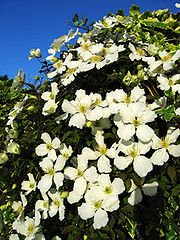Stinging nettles can be very painful and memories as a child from touching them are quite vivid. We learn from experience and most who have encountered stinging nettles for the first time I am sure were left with a lasting impression of pain. But nettles have many other uses, including the sting elements.
The Romans rubbed nettles on their body to reduce arthritic pain and is commonly prescribed in the treatment of arthritis today in the form of tea or tincture.
The nettle herb is rich in minerals including iron, calcium and silica and also vitamin C and chlorophyll. something that many don't know is that the nettle has lots of protein and excellent nutritional value and used as a good tonic for blood, iron deficiency, gout, chronic skin diseases and rheumatism.
Food wise, nettle can bee used in the same way as spinach and tastes simliar, try mixing it and cooking with spinach. Nettle beer is an old favourite of mine, the recipe is given here - Well worth the effort and don't forget, it is very cheap to make.
The Romans rubbed nettles on their body to reduce arthritic pain and is commonly prescribed in the treatment of arthritis today in the form of tea or tincture.
The nettle herb is rich in minerals including iron, calcium and silica and also vitamin C and chlorophyll. something that many don't know is that the nettle has lots of protein and excellent nutritional value and used as a good tonic for blood, iron deficiency, gout, chronic skin diseases and rheumatism.
Food wise, nettle can bee used in the same way as spinach and tastes simliar, try mixing it and cooking with spinach. Nettle beer is an old favourite of mine, the recipe is given here - Well worth the effort and don't forget, it is very cheap to make.
HOME-MADE NETTLE BEER
Ingredients
- 1 kg Young Nettles (Tops only)
- 5 ltrs Water
- 500g Sugar
- Juice of 2 Lemons
- 25g Cream of Tartar
- 15g Brewers or Wine Yeast
- Wash the nettles and shake dry in a tea towel.
- Put the nettles into the water into large saucepan and 20 minutes.
- Strain into a large container. Peel off the yellow rind of the lemons and squeeze out the juice then add the these and the cream of tartar to the bulk liquid stirring well.
- After the mixture has cooled down to room temperature mix the yeast with a little of the liquid and then stir it back into the liquid.
- Cover the container with a clean towel to form a lid, you may have to tie it on with some string to prevent the middle of the towel dipping into the mixture.
- Leave in a warm place for around 3-4 days then strain the liquid into plastic lemonade bottles leaving around 4 cm of air for pressure that will build up.
- Store the bottles in a cool dark place and you can drink it after about a week.
Cheers!



![Reblog this post [with Zemanta]](http://img.zemanta.com/reblog_e.png?x-id=95d2adb5-7a9b-47cc-a439-7bde1c04a1e2)

![Reblog this post [with Zemanta]](http://img.zemanta.com/reblog_e.png?x-id=d6f8cd82-39bb-4106-b6ec-a1ba1bdae2ff)

![Reblog this post [with Zemanta]](http://img.zemanta.com/reblog_e.png?x-id=5c4f4c2c-17aa-4c9a-b770-13ebc0c2e574)




